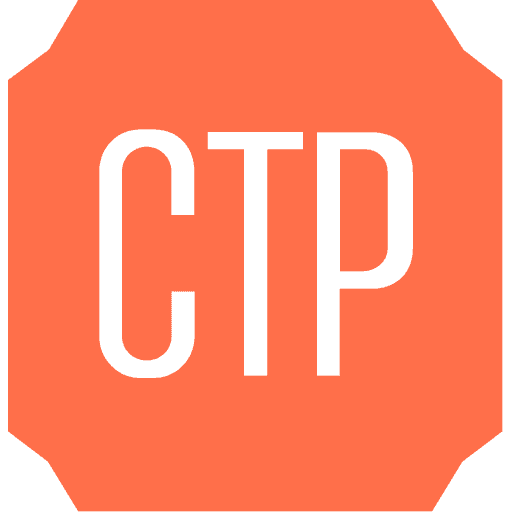In the first in a series of new conversations with communications and marketing leaders we take a look at the impact of COVID-19 on higher education. We talked with Simmons University‘s Associate Vice President of Communications and Public Affairs Jeremy Solomon, who brings us behind the scenes as the school navigated the earliest days of the coronavirus outbreak, the impact on the university experience and how they communicated with students, faculty and the public.

Simmons seemed to be early with its response to the coronavirus. Take us inside those first days as campus was shut down. What were your communications priorities?
Our first priority was to gather as much accurate information as possible. In the beginning stages of the outbreak, much of the discourse was not alarming. As of late January there were only five confirmed COVID-19 cases in the U.S., and the CDC was recommending against nonessential travel to China. We began closely monitoring news and information from other colleges and universities in the area, but our business continued as usual.
We began working in concert with the other four Colleges of the Fenway, and at this stage we were also carefully monitoring what the University of Washington was doing, from the epicenter of the crisis. UW launched an excellent coronavirus landing page on their site, with comprehensive information and links to key federal, state, and local resources. That served as a model for us.
We sent our first campus-wide email on January 27th with information about the virus, its symptoms, and how to avoid spreading it. We also asked anyone who developed symptoms within 14 days of traveling to China to contact our health services department.
As the crisis unfolded, we had to make important decisions quickly. Our President’s leadership team began meeting every morning. Within a few weeks we had to decide to cancel Study Abroad programs and recall our students, close residence halls and organize a social distance-based move-out process, transition academic courses online and cancel all meetings and events, including athletics and Commencement. At the same time, we created guidelines for staff to work remotely, made an emergency housing plan for students, instituted a refund approach for room and board and meal plans and explored ways to support our contract workers.
What have been the most effective ways for the university to keep your students and families informed? And the biggest challenges?
As the crisis ramped up and hit closer to home, so too did our outreach and messaging.
We wanted to become a reassuring and trusted voice of important information for our community. We especially wanted to be sure we quashed rumors by providing a steady flow of new and accurate information. We created the simmons.edu/coronavirus landing page and began sending daily updates to faculty, staff, students, and parents via email. Our president also sent regular messages, providing context and a compassionate voice as these key and impactful decisions were made.
Throughout the crisis we utilized the same communications channels we typically use, but modified some of them. For example, email has long been effective and reliable in reaching all stakeholders we want to communicate with: students, faculty, staff, alumni, prospective students, and parents. We created a new email address, preparedness@simmons.edu, that has been effective as a repository for triaging and answering questions. We also began sending large-scale messages from that account to encourage swift and triaged responses. We launched the Preparedness email on March 4th and continue to monitor it daily.
Our comms team was fortunate to be getting a daily update on the deliberations at the highest levels, so we were aware of updated information in real time. The biggest challenge was keeping up with the volume as the crisis evolved. In real time we were responding to questions and comments that were coming in; updating website content; delivering the messages our President was writing; responding to media inquiries; and keeping a log of incoming emails and a calendar of events and decisions we were making. The team is small, but we managed to work together and get everything done effectively and efficiently, which I think led to some goodwill and confidence among the Simmons community.
Are there certain PR principles that you and the team have leaned on during the crisis?
I’ll give you three:
- Let the experts have their voice. When the crisis hit and we started getting a rush of questions, we felt it was important for leaders in relevant areas to respond. For example, we steered housing questions to the Dean of Students, health-related questions to our student health services office, questions about Commencement to the Provost’s Office, and questions about international students to our global education staff. Having the experts correspond directly with the people assured the answers would be accurate, and it enabled them to establish a personal rapport with members of our community that were rightfully anxious about things.
- Don’t communicate until you are ready. We felt that if we sent a message on a particular subject, it would be damaging if we would have to go back later and contradict ourselves. So we had plenty of media-facing and internal statements that said something like, “We are aware that some colleges and universities have made the decision to do X. We continue to study our options and will continue to follow closely the advice of our local, state, and federal health officials with the health and safety of our community being paramount. We will continue to provide additional updates to our community as we have them.” I can proudly say that we might have walked back a previous decision only one time during this crisis, and I think it’s because we did our due diligence and carefully considered all options. Once a decision was final, only then did we communicate and stand by it. I think that really contributed to the credibility of Simmons leadership and those of us on the communications team.
- Telegraph your move when possible. Rather than abruptly moving all academics online as some colleges did, our Deans sent a message to their faculty 17 days before the first day of remote classes, forecasting the move. Similarly, we sent a carefully worded email to students saying an in-person Commencement was a possibility but we weren’t able to confirm it would happen. Eleven days later we sent the message it had been canceled. Giving people time to process information and contemplate bad news can help to soften the blow.
When you get back to campus what priority is atop your To Do list?
It remains uncertain when we will all be back together on campus. Most colleges are discussing what a fall 2020 semester would look like if it had to be fully online, and those that aren’t should be. When we get back, to me the highest priority will be wellness checks. Some of our colleagues or partners might have lost loved ones or were sick themselves. Some might have endured economic hardship or fractured relationships. For all of us, this was a traumatic upheaval, so we cannot expect the lights to come on and conduct business as usual when we can get back to campus. There will need to be some time to heal.
I am eager to get back to reestablish in-person relationships with my Simmons colleagues and our partners in the Boston community. Zoom and FaceTime are no substitutes for coffees and lunches as a means of checking in with the people you care about.
What has this experience taught you?
This has been a very difficult, unchartered time for all of us. In higher education, the complexities were especially challenging as we transformed our educational structure on the fly, closed residence halls, and managed the mental and physical health and wellness of the Simmons community. I learned a few valuable lessons.
- As an institution, we can rise to the occasion. Our senior leaders made smart decisions in a short window of time, under extreme duress. In some ways, the social distancing has brought us closer together, as we relied on the expertise of one another to help navigate the path forward.
- You can never communicate too much. We continue to send daily email updates, even as the major decisions have largely been made. The anxiety people are feeling is still real and well-placed, and having a regular, trusted source of information has been reassuring to many of them.
- It is important for employers to practice compassion. Simmons recognized that people were being forced into a new, remote environment, but even more than that, we understood the fear and anxiety this outbreak has caused. Employees are being encouraged to take the time they need to tend to their families, their health, and their mental well-being – even if it’s on “company time.” There must be more than lip service paid to your workers, especially during a crisis that involves health risks.
- Count your blessings. Let’s face it. The coronavirus sucks. We’re trapped in our homes. Schoolchildren are losing months of time building friendships, educational activity, vacations, and more. We haven’t seen our family and friends in person in weeks. Commencements, graduation parties, birthdays, weddings, sporting events, and so many other cherished gatherings and traditions have been canceled. Not to mention what everyone’s hair looks like right now.
But we also know many people around the nation and the world have it much much worse. I think of those who lost loved ones and were unable to spend final moments with them. I sympathize with the millions who were living paycheck to paycheck before the virus and now are living without those paychecks. I worry about the future of higher ed and many other industries and wonder if an economic recovery will ever return us to where we were pre-COVID.
In these uncertain times, we need to be thankful for the people who care about us. We need to take this opportunity to rekindle old friendships and to check in on those we love. We will come back, as a nation and as humans because we are resilient. But for now, as we remain in our homes, let’s be thankful for what we have and show our appreciation for the workers who are protecting and sustaining us, and for the loved ones in our lives.

